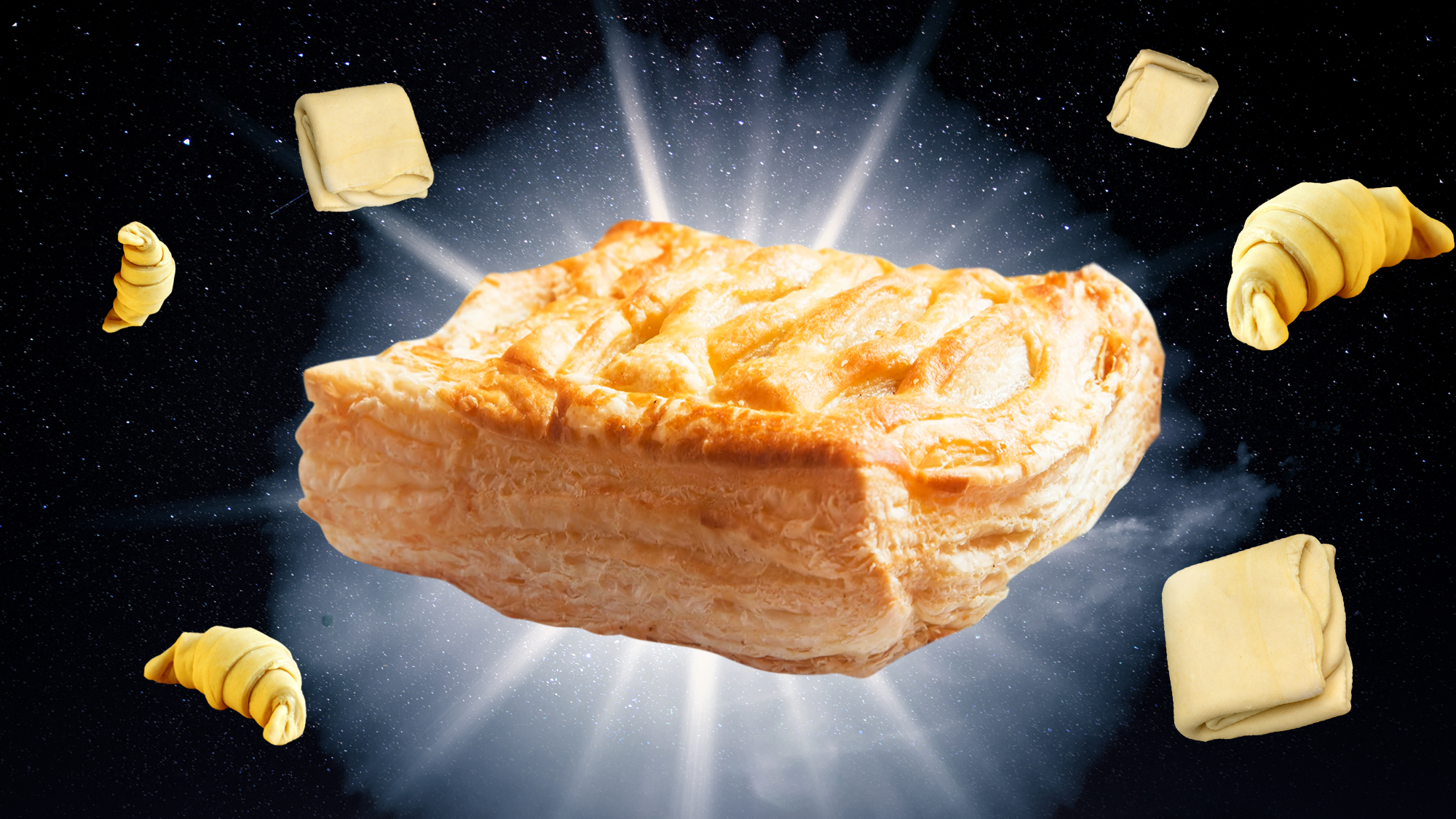Puff Pastry Is A Kitchen Fear Worth Conquering
I'm lazy by nature and skeptical by profession, neither of which has ever seemed like a good fit for complicated cooking projects. So when I stepped into a baking class at Brooklyn's Ovenly last month, I was just expecting to learn a few fun holiday desserts from pie expert Erin McDowell and bread pro Martin Philip (also head baker at King Arthur Flour in Norwich, Vermont) and then walk away with some recipes in hand. When they announced that all of that day's treats would involve making laminated dough, I took a step back from the demo station, continued walking backward all the way to the refreshments table, and poured myself a generous splash of Vermont cider. I would never be able to replicate laminated dough, known to cause even the pros some strife.
I worked in a patisserie during and after college, and laminated dough was the main source of early morning swears and fits from the kitchen, where my work was mostly relegated to sandwiching macarons or stacking fresh-baked cookies to look like they were worth $5 each. I had never been to pastry school (still haven't), so dealing in the butter-based doughs used for croissants and other viennoiserie (aka "flaky pastries") was not for me.
Now in Brooklyn, I sipped my cider as rain poured down outside. The oven timer rang, and suddenly McDowell was in front of me, the buttery scent of her sharp-parmesan-studded puff pastry bites luring me back into class. I might be lazy and skeptical, but I'm eager to learn.

As the general food-loving population becomes more ambitious with kitchen projects, homemade puff pastry, once relegated to the prepared foods aisle for simple crowd-pleasing apps and desserts, has stepped into the spotlight (and onto Instagram).
Puff pastry—or, if you're French about it, pâte feuilletée—is a notoriously finicky flaky dough, created by layering fat (butter) and dough via several rounds of delicate folding. It takes either immense patience or immense luck to fold properly, involving a rhythmic rotation of chilling the dough, rolling it out, folding it over, chilling it, and preparing to roll out its new folds in the next round. Butter ratios and kitchen temperature and dough texture must be precise to create a flake while baking.
But puff isn't as hard as it seems, or at least, there are shortcuts you can take. "Rough puff" or "blitz puff," the easier methods demonstrated in my class, are becoming more popular with pros and home bakers alike, appealing to anyone uninterested in spending 24-hour cycles chilling and folding dough. When you choose an alternative method, the puff pastry process can be accomplished in one mixing and folding cycle.
With fresh puff dough, the butter browns and caramelizes delightfully, a feat nearly impossible with the stuff that's been manufactured by machinery less delicate than a set of human hands. The browned butter creates a glossy sheen on your baked goods, which is not only a pleasure to bite through, but to—ahem—photograph. And with a little advance prep, rough puff can be ready to bake in about an hour, which is faster than most grocery delivery services could bring dough to your door.

Making rough puff pastry
Rough puff is all about ratios: equal weights (yes, you need a food scale) of cold flour and cold butter, cold water at 50% of the flour weight, and salt at 2% of the flour weight. And that's it. This recipe offers the flexibility to play with flours, swapping in grains like buckwheat or rye for all-purpose flour (or a blend), which can result in more tender or structurally unique layers of puff, once baked. In our class, McDowell used black cocoa to whip up a chocolate puff, and topped the puff squares with sliced blood oranges.
Mix the dry ingredients, then fold in the butter (sliced into small pats) with your fingers or a fork. Add cold water in splashes and knead the dough together on a floured surface, until it's a cohesive log (or lump). Butter clumps should still be visible—these will be what create the flaky puff. Roll out the lump into a rectangle, dust both sides with flour, and fold the shortest end of the rectangle into thirds, like a letter folded for a snail mail envelope. Turn it 90 degrees, re-roll it into a similar size rectangle, and repeat the fold. Typical puff doesn't combine these folding steps into one move, but you're efficient, and your time is valuable.
Finally, wrap the dough in plastic wrap and chill it in the fridge. Watch an episode of Schitt's Creek, and then check on your dough; if it's cold to the touch, it's ready to roll out and bake. If at any point the butter feels too melty while you're working with it, toss it in the fridge or freezer for a few minutes (the chill is essential), and then you're ready for a flaky bake.
How should you use your puff pastry? With laminated dough, the options are endless, and I'm still discovering rough puff's full potential. Philip demonstrated that cookie cutters can be used to cut out shapes, which can then be topped with anything from leftover shredded turkey and salsa to candy canes (unwrapped, please).
Now that I've overcome my puff pastry fears, I hope the same for any of you currently sipping cider in the back of a baking class. Right now, I'm loving chocolate puff, and I'm looking forward to experimenting with matcha. There's something about dyed dough that impresses guests. (And Instagram followers.)
